Genre: Platformer Developer: Domark Publisher: Tengen Players: 1 Released: 1993
When Prince of Persia was first released on the Apple II in 1989, it took the then-nascent computer gaming world by storm because of its extremely fluid (for that time) character movements, its obscene difficulty and its “unique” controls. As a result, the good prince found himself in numerous different computers and consoles, ranging from the obscure (SAM Coupe, among others) to the common (Genesis, SNES, etc.). Tengen saw a good opportunity to make a quick buck while coat-tailing on the success of Prince of Persia and made a port onto the Genesis. How does it stand?
As far as the story goes, the Sultan of Persia is gone to a foreign war and while he is gone, his Vizier, Jaffar, usurps power and tries to bed the Sultan’s daughter. She refuses, as she is already in love with another, and Jaffar gives her one hour to rethink her decision while he locks up her love interest. He (the lover, or in this case, you) has one hour to break the spell and restore peace to the kingdom. A trodden path, even back then. Heck, even the basic premise of Super Mario Brothers is along the same lines as this! But that’s a story for another time.
The overall presentation of Prince of Persia is in the better half of the camp, with detailed aspects to come. However, there are two critical flaws that can only be alleviated by getting used to them. Unlike other platformers, the screen does not scroll with the prince in the center; when the prince hits the edge of the screen, the scene changes. That, in itself, is not necessarily a bad thing, but when Tengen incorporated a fade-in, fade-out sequence, it made the player feel like there was some form of loading going on. For reasons unknown, an instant flick wasn’t possible, throwing players off-balance whenever the scene changed. The cautious type walked the prince from one screen to another while those short on time ran, praying that an enemy or obstacle was not in the next scene. The second flaw was that the screen would flash whenever there was a change to the lifebars of the prince or any enemy he faced; if the Prince lost a life, the screen would flash red and fade out and if the enemy lost a life, the screen would flash blue and fade out. Too bad Tengen isn’t around; they could use a good beating for these gaffes.
One of Prince of Persia’s greatest point of controversy, or shining star, depending on how it’s looked at, is the controls. Unlike most plaformer games back then, character movement is not pinprick precise where the amount of distance the character moves is proportional to how long the player holds the button. A single tap on the D-pad makes the prince “jog” a certain fixed distance while holding the D-pad makes the prince run continuously. Letting go after running will not stop the prince dead in his tracks but come to a stop roughly half a second later. Along this line, executing a leap will also have a slight delay between inputting the command and actually seeing the prince jump. Those who have played Flashback will feel more or less at home.
Another one of Prince of Persia’s highlights: the difficulty. As there are too many ways to die in the game, there are passwords given out every time a level is completed. But Mechner and Tengen seemed to have a taste for sadism, as he also proceeded to slap on a real-time one-hour time limit. What’s even worse, if the prince dies in the middle of a level, he starts over, but the time limit does not reset. Be prepared to hit the reset button on the Genesis numerous times if you want to be able to beat this game without cheating, since the same applies when the player opts to restart a level.
Moving onto more agreeable ground, the graphics are easy on the eyes and do a good job in setting up the ambience of the stages. There are only two different settings for the twelve stages, an underground dungeon and a luxury palace, but Tengen is to be commended for not skimping on detail. Small touches like tied skeletons, torches and hanging carpets do a good job on accentuating the two backgrounds. On top of that, all the characters are also nicely detailed, showing layered clothing such as vests, pants and turbans. Given the Genesis’s lack of visual power compared to its 16-bit competitors, it was truly a visual feast, even though other factors didn’t allow the player to truly drink it down.
In the audio department, there is not much to say about it, and I am glad about that. A lack of background music did a good job in maintaining a dark ambience throughout the game, and while there were snippets that played if a significant event happened (the prince dying, the enemy dying, etc.), it was as if the tones were randomly composed and shoehorned in. This is one game that can (or should) be played mute. Sound effects were closer to blips and bloops than anything resembling the given action at the time. Given that audiofests like Sonic the Hedgehog 2 were released a year ago, Tengen has no excuse to not improve on the audio elements.
While the graphics and controls (to some degree) are some of Prince of Persia’s shining stars, the screen transitions and color flashes mar them quite a bit. As a game, Prince of Persia definitely deserves to be in the upper tier.
SCORE: 7 out of 10

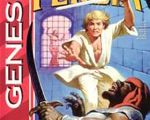
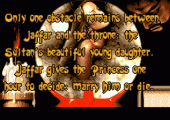
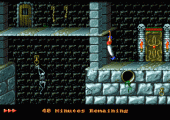
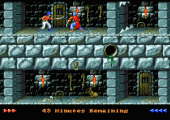
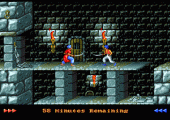
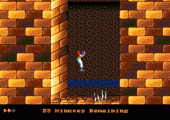
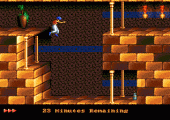
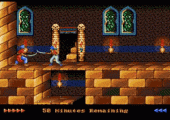
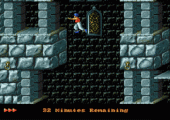
Recent Comments